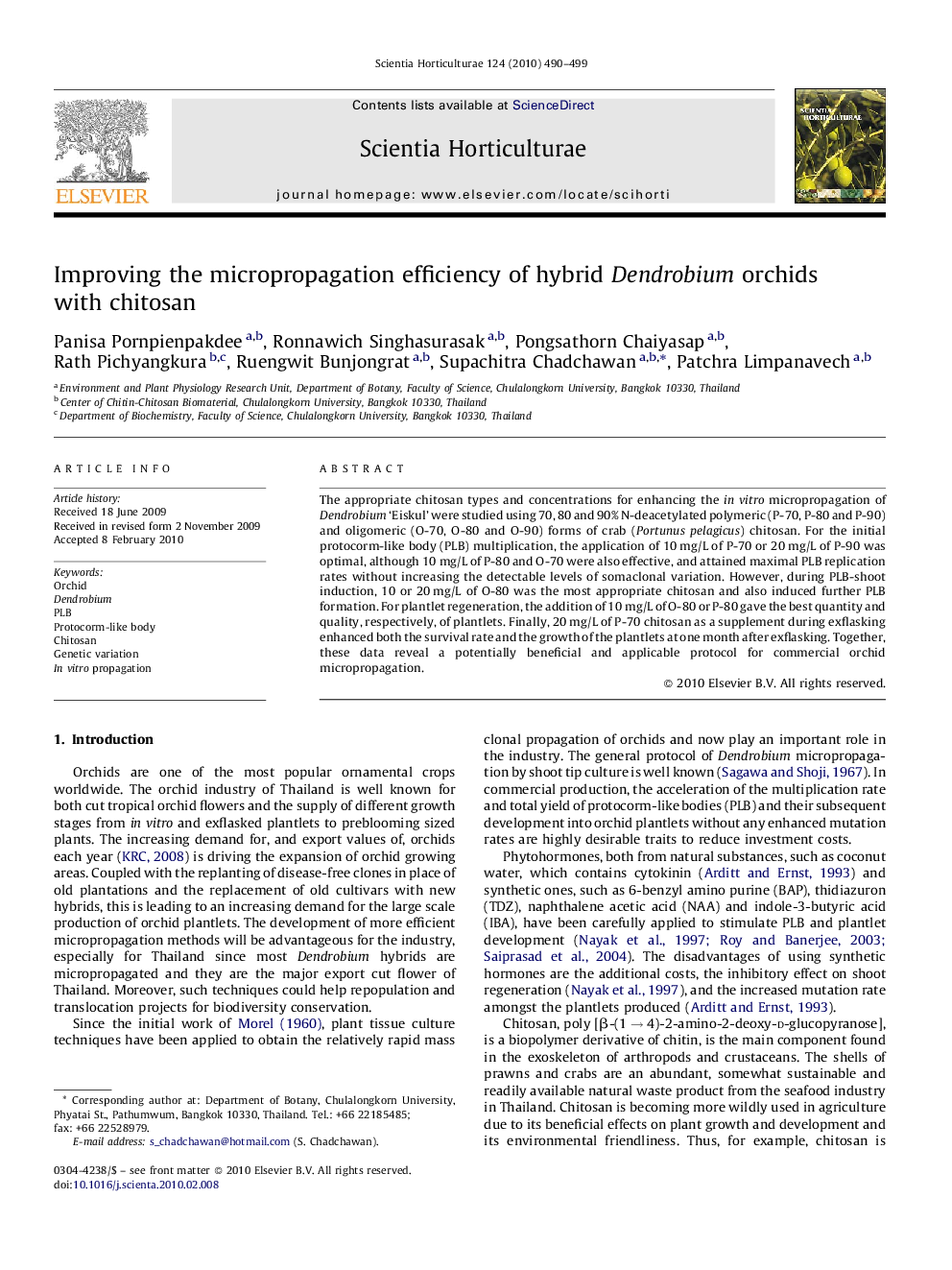| Article ID | Journal | Published Year | Pages | File Type |
|---|---|---|---|---|
| 4568499 | Scientia Horticulturae | 2010 | 10 Pages |
The appropriate chitosan types and concentrations for enhancing the in vitro micropropagation of Dendrobium ‘Eiskul’ were studied using 70, 80 and 90% N-deacetylated polymeric (P-70, P-80 and P-90) and oligomeric (O-70, O-80 and O-90) forms of crab (Portunus pelagicus) chitosan. For the initial protocorm-like body (PLB) multiplication, the application of 10 mg/L of P-70 or 20 mg/L of P-90 was optimal, although 10 mg/L of P-80 and O-70 were also effective, and attained maximal PLB replication rates without increasing the detectable levels of somaclonal variation. However, during PLB-shoot induction, 10 or 20 mg/L of O-80 was the most appropriate chitosan and also induced further PLB formation. For plantlet regeneration, the addition of 10 mg/L of O-80 or P-80 gave the best quantity and quality, respectively, of plantlets. Finally, 20 mg/L of P-70 chitosan as a supplement during exflasking enhanced both the survival rate and the growth of the plantlets at one month after exflasking. Together, these data reveal a potentially beneficial and applicable protocol for commercial orchid micropropagation.
